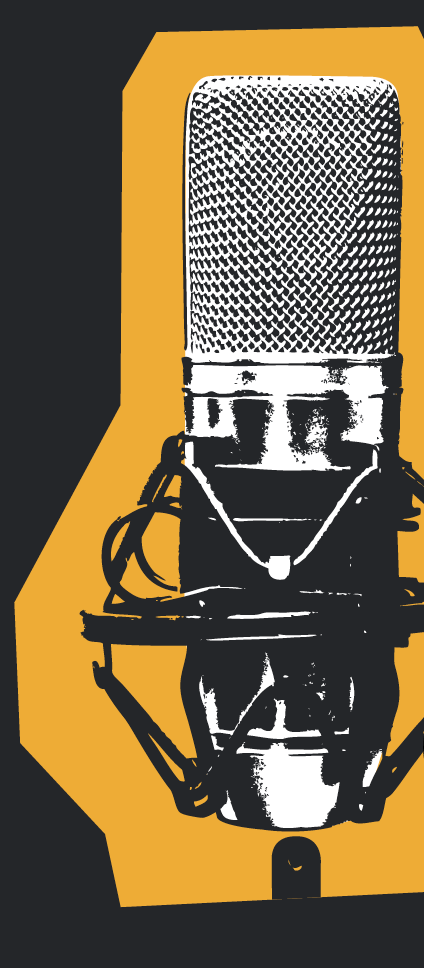-

Fall Classes During COVID-19
Mike Lawson | October 28, 2020
Read More...It all started with a viral photo. Anger, fear, confusion, and hopelessness swirled when Georgia high school sophomore Hannah Watters posted a picture of a crammed school hallway in early August, demonstrating just how hard it is to social distance in an in-person school environment.
-
JackTrip Foundation’s Push for Realtime Online Performance
Mike Lawson | October 28, 2020
Read More...The past couple of issues I have printed stories about companies rushing to fill a need that sprung forth last spring -- the opportunity for musicians to perform or rehearse together remotely. The topic is fraught with barriers preventing real-time collaboration. Audio latency issues aside, there are computer needs, audio interfaces, Internet connections, microphones, webcams —a lot of things needed in order to run a remote live session using audio and video.
-
How To Host Your Holiday Concerts Online
Mike Lawson | October 28, 2020
Read More...The cool crispness in the air, the crackle of the fire, and the sound of your co-workers planning their holiday vacations: it’s all a sign you won’t get to fully relax until the holiday performances are over. And what might your performances look like this year? Will you even have one? And if you do, how can you make it truly an event, and not just another class Zoom call?
-
You Are Enough: Self-Care in this Stressful Time
Mike Lawson | October 28, 2020
Read More...The phrase has been overused recently, but we are in unprecedented times. I am taking a step back from the orchestra tips this month, to address the stress I am seeing every day in the various social media groups I belong to.
-
Pre-Service Music Teacher Education in a Virtual Environment
Mike Lawson | October 28, 2020
Read More...I teach music education and music technology courses at Montclair State University in northern New Jersey. This semester, like at many other colleges and university courses, all of my classes are online.
-
The Magic High-Pass Filter
Mike Lawson | October 28, 2020
Read More...If you recently purchased a USB microphone, or almost any mic for that matter, you might notice the little “broken leg” symbol somewhere on the body. This is the switch for the powerful high-pass filter, one of the most understated and overlooked controls in all of audio.
-
Warning: Trying to access array offset on value of type bool in /home/sbomagazine/public_html/site/wp-content/themes/timeless2021/functions.php on line 437
Warning: Trying to access array offset on value of type bool in /home/sbomagazine/public_html/site/wp-content/themes/timeless2021/functions.php on line 438
Performance of Our National March
Thomas Palmatier | October 28, 2020Composed on Christmas Day, 1896 by John Philip Sousa, “The Stars and Stripes Forever” quickly became one of the most famous marches both in the United States and abroad. In 1987, the U.S. Congress designated it as the National March of the United States.
Read More... -
Warning: Trying to access array offset on value of type bool in /home/sbomagazine/public_html/site/wp-content/themes/timeless2021/functions.php on line 437
Warning: Trying to access array offset on value of type bool in /home/sbomagazine/public_html/site/wp-content/themes/timeless2021/functions.php on line 438
Preparing a Multi-Percussion Work
Mike Lawson | October 28, 2020There is nothing conventional about preparing a multi-percussion work. It requires a lot of planning and organization, as well as a degree of understanding regarding the work itself. As most band programs focus on individual percussion instruments, combining many instruments at one time is a challenge for your students, yet it offers amazing musical development.
Read More... -
Performance Based Assessments: Enhancing Effectiveness
Mike Lawson | October 28, 2020In the current era of testing and accountability, instrumental music educators must document evidence of individual student growth. The majority of this data is often derived from individual performance-based assessments.
Read More... -
No Easy Answers
Mike Lawson | October 28, 2020
Read More...I don’t have any. This year sucks. It’s knocked the wind out of a lot of musicians, students, teachers, parents, and all things related. There is no national standard to follow, it’s a mess state by state times 50.
Warning: Undefined variable $additional_loop in /home/sbomagazine/public_html/site/wp-content/themes/timeless2021/archive.php on line 103
Warning: Attempt to read property "max_num_pages" on null in /home/sbomagazine/public_html/site/wp-content/themes/timeless2021/archive.php on line 103


 It all started with a viral photo. Anger, fear, confusion, and hopelessness swirled when Georgia high school sophomore Hannah Watters posted a picture of a crammed school hallway in early August, demonstrating just how hard it is to social distance in an in-person school environment.
It all started with a viral photo. Anger, fear, confusion, and hopelessness swirled when Georgia high school sophomore Hannah Watters posted a picture of a crammed school hallway in early August, demonstrating just how hard it is to social distance in an in-person school environment.
 The past couple of issues I have printed stories about companies rushing to fill a need that sprung forth last spring -- the opportunity for musicians to perform or rehearse together remotely. The topic is fraught with barriers preventing real-time collaboration. Audio latency issues aside, there are computer needs, audio interfaces, Internet connections, microphones, webcams —a lot of things needed in order to run a remote live session using audio and video.
The past couple of issues I have printed stories about companies rushing to fill a need that sprung forth last spring -- the opportunity for musicians to perform or rehearse together remotely. The topic is fraught with barriers preventing real-time collaboration. Audio latency issues aside, there are computer needs, audio interfaces, Internet connections, microphones, webcams —a lot of things needed in order to run a remote live session using audio and video.
 The cool crispness in the air, the crackle of the fire, and the sound of your co-workers planning their holiday vacations: it’s all a sign you won’t get to fully relax until the holiday performances are over. And what might your performances look like this year? Will you even have one? And if you do, how can you make it truly an event, and not just another class Zoom call?
The cool crispness in the air, the crackle of the fire, and the sound of your co-workers planning their holiday vacations: it’s all a sign you won’t get to fully relax until the holiday performances are over. And what might your performances look like this year? Will you even have one? And if you do, how can you make it truly an event, and not just another class Zoom call?
 The phrase has been overused recently, but we are in unprecedented times. I am taking a step back from the orchestra tips this month, to address the stress I am seeing every day in the various social media groups I belong to.
The phrase has been overused recently, but we are in unprecedented times. I am taking a step back from the orchestra tips this month, to address the stress I am seeing every day in the various social media groups I belong to.
 I teach music education and music technology courses at Montclair State University in northern New Jersey. This semester, like at many other colleges and university courses, all of my classes are online.
I teach music education and music technology courses at Montclair State University in northern New Jersey. This semester, like at many other colleges and university courses, all of my classes are online.
 If you recently purchased a USB microphone, or almost any mic for that matter, you might notice the little “broken leg” symbol somewhere on the body. This is the switch for the powerful high-pass filter, one of the most understated and overlooked controls in all of audio.
If you recently purchased a USB microphone, or almost any mic for that matter, you might notice the little “broken leg” symbol somewhere on the body. This is the switch for the powerful high-pass filter, one of the most understated and overlooked controls in all of audio.

 I don’t have any. This year sucks. It’s knocked the wind out of a lot of musicians, students, teachers, parents, and all things related. There is no national standard to follow, it’s a mess state by state times 50.
I don’t have any. This year sucks. It’s knocked the wind out of a lot of musicians, students, teachers, parents, and all things related. There is no national standard to follow, it’s a mess state by state times 50.





